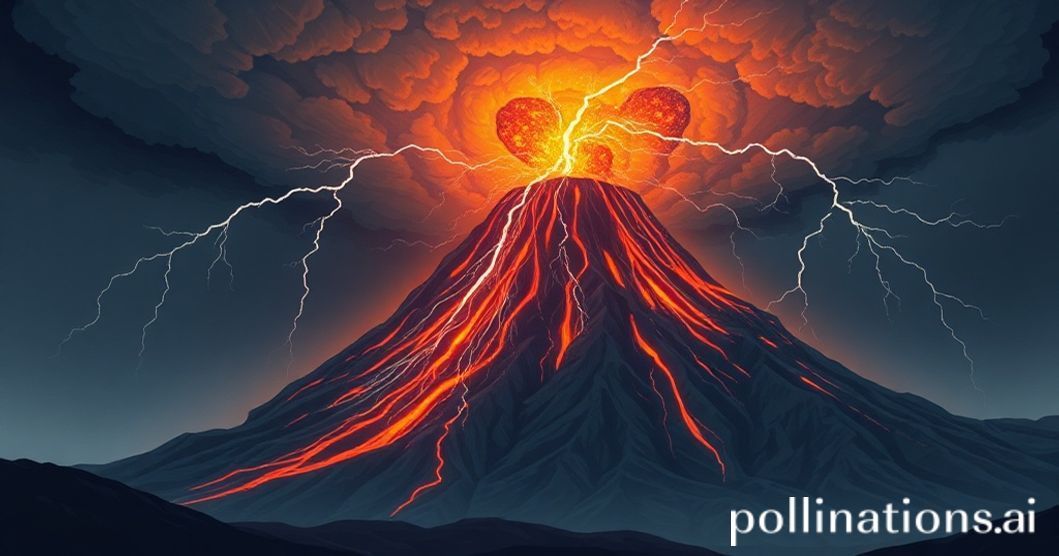A different kind of lightning Volcanic lightning, in simple terms, is an incredibly eerie and mysterious phenomenon, in the form of a powerful barrage of lightning that occurs, not through thunderstorms, but rather during volcanic eruptions. Normal lightning is caused by the sudden electrostatic discharge (the sudden flow of an electric current caused when two differently charged objects come together) between two electrically charged regions of a cloud. Volcanic lightning, on the other hand, occurs at the early stages of a volcanic eruption.
While its overall mechanism and process are still being studied, researchers have identified the main cause as the collision that occurs between ash particles within the volcanic plume. The collision and rubbing of these particles together lead to the generation of static electricity, which, in turn, builds up charges and creates flashes of lightning.
This type of lightning can be found in two places: at the dense ash clouds located closer to the ground, and higher up, in the eruption plume. Here, ice particles form (from water vapourised from the magma) and collide, building electric charges and creating lightning visible strikes at higher levels. Studies have shown that the water content found in volcanic plumes is higher than that in thunderstorms.
Some other causes for the lightning include rock fragments, ash, etc. Warning system On the surface, volcanic lightning is an incredibly dangerous phenomenon that you would do well to stay away from. However, similar to how a half-empty glass can be seen as half full, a big, dangerous lightning show can also be viewed as a flashy warning.
Volcanoes are known for their unpredictability, so having a natural monitor to help one prepare for them would be incredibly helpful and life-saving. As stated before, volcanic lightning is a phenomenon that occurs during the early stages of eruption. These discharges of lightning are detected by warning systems spread across the world, with one of the most notable being the World Wide Lightning Location Network (WWLLN).
When these systems track the lighting patterns generated at the volcano and the flow of the ash clouds, they send out alerts to the residents to evacuate well before the actual eruption begins. Another safety factor lies in the pathways of aeroplanes.
The volcanic ash generated from eruptions poses a great risk of engine failure if they are ingested by the plane and solidifies on the turbine blades. When monitored, the volcanic lightning serves as a means to alert aviation authorities and pilots of oncoming eruptions, giving them time to take new routes. The first lightning When it comes to recordings or historical instances of volcanic lightning, the earliest was made by Pliny the Younger, who was a lawyer and magistrate of Ancient Rome.
The eruption he described had been from Mount Vesuvius in Italy in 79 AD. He had written “there was a most intense darkness rendered more appalling by the fitful gleam of torches at intervals obscured by the transient blaze of lightning.
” The way he described it makes it sound like something out of a dark fantasy! But apart from this claim made by the lawyer, the first studies on volcanic lightning were conducted at the mountain by Italian physicist Luigi Palmieri. From eruptions in 1858, 1861, 1868, and 1872, Palmieri had witnessed lightning activity also take place.


